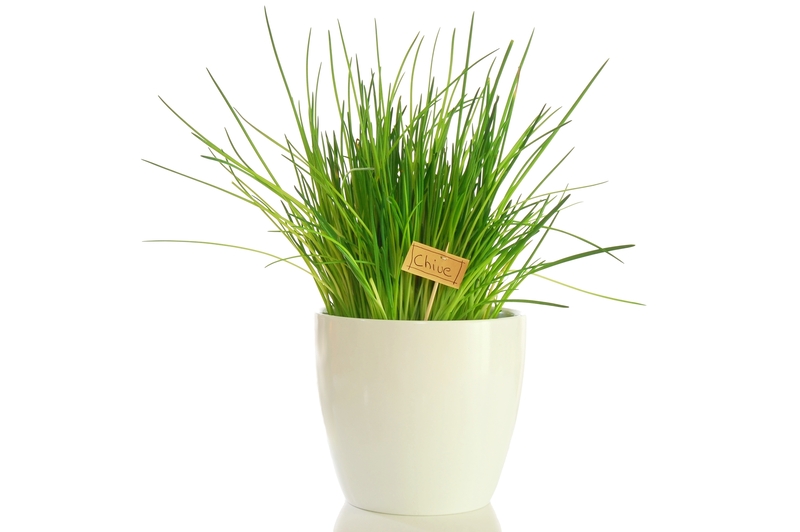Creating Engaging Outdoor Spaces for Young Children
Posted on 23/09/2025
Creating Engaging Outdoor Spaces for Young Children
Outdoor spaces for young children are more than just playgrounds - they are dynamic environments that stimulate exploration, learning, and social development. Thoughtfully designed outdoor play areas spark curiosity, promote healthy development, and nurture a lifelong love for nature in children. If you're interested in designing engaging outdoor spaces for early childhood--whether at home, in childcare settings, or within community parks--this comprehensive guide will equip you with the insights, tips, and inspiration you need.
Why Are Engaging Outdoor Spaces Vital for Young Children?
The importance of engaging outdoor environments for young children cannot be underestimated. According to childhood development experts, well-designed outdoor areas offer several key benefits:
- Physical development: Children build gross and fine motor skills by running, climbing, digging, and balancing.
- Emotional well-being: Nature has a calming effect and helps children manage stress.
- Social skills: Outdoor play fosters collaboration, conflict resolution, and empathy.
- Intellectual growth: Engaging outdoor play encourages critical thinking, creativity, and problem-solving.
- Connection to nature: Regular access to outdoor spaces helps children develop an appreciation for the environment.
Support from Research
Multiple studies highlight the positive impact of purposeful outdoor play spaces on children's holistic growth--from boosted memory and cognitive function to improved physical health and social competence.

Fundamentals of Designing Outdoor Spaces for Young Children
An effective outdoor play space design for young children blends safety, accessibility, variety, and opportunities for discovery. Think beyond typical playground structures. The best outdoor spaces are child-centered, flexible, and invite both guided and independent play. Here's what to consider before you start:
1. Prioritize Safety
- Use soft ground materials (such as mulch, sand, or rubber matting) to cushion falls.
- Ensure equipment is age-appropriate and regularly maintained.
- Keep sharp, toxic, or hazardous items out of reach.
- Supervise escape routes and blind spots with clear sight lines.
2. Accessibility for All
Create inclusive outdoor spaces by considering children of all abilities. Incorporate ramps, wide paths, low tables, and sensory-rich play features. This approach encourages participation and belonging for everyone.
3. Natural Elements
- Trees, shrubs, and flowers: Offer shade, beauty, and habitats for local wildlife.
- Sand, water, rocks, and logs: Provide open-ended materials for imaginative and sensory play.
- Let children dig, plant, and care for gardens to build a connection with nature.
4. Flexible Play Zones
Design outdoor areas with a mix of zones--active areas for running and climbing, quiet spaces for reflection, and creative corners for art or storytelling.
Key Features of Engaging Outdoor Play Spaces
Active Play Areas
- Slides and swings: Classic favorites that develop balance and coordination.
- Climbing walls, tunnels, and bridges: Build strength, confidence, and problem-solving abilities.
- Bikes, trikes, and scooters: Marked pathways for safe riding encourage independence.
Imaginative and Creative Play
- Loose parts play: Offer items such as sticks, stones, fabric, buckets, and crates for children to invent their own games.
- Role-play and drama: Add playhouses, puppet theaters, or a "market stand" for creative scenarios.
- Outdoor art corners: Provide easels, paint, chalk, and natural materials for self-expression.
Sensory Experiences
- Sandpits and mud kitchens: Invite tactile exploration and imaginative cooking.
- Water tables, pumps, or streams: Support hand-eye coordination and experimentation.
- Textured pathways: Use stones, wood chips, and grass for diverse sensory input.
Nature Discovery Zones
- Mini gardens or raised beds: Encourage planting, watering, and observing living things.
- Bug hotels, bird feeders, and observation logs: Support ecological learning.
- Secret nooks: Tucked-away spaces under shrubs or vines for quiet reflection and observation.
Designing Engaging Outdoor Spaces for Different Age Groups
Infants and Toddlers (Ages 0-3)
- Use soft, shaded areas for crawling and tummy time.
- Provide low, stable play structures for pulling up and cruising.
- Offer large, safe objects for grasping, stacking, and banging.
- Include musical elements such as chimes or drums for auditory stimulation.
Preschoolers (Ages 3-5)
- Add more challenging climbers and balancing elements.
- Encourage pretend play with props and open-ended materials.
- Incorporate sand, water, and gardening features.
- Provide areas for group games and cooperative activities.
Early Primary (Ages 5-7)
- Introduce sports equipment and obstacle courses.
- Expand nature study options--science stations, bird blinds, or weather tracking.
- Ensure a balance of active, creative, and reflective spaces.
Maximizing Engagement: Tips and Innovative Ideas
1. Rotate Materials Frequently
Engagement increases when children encounter new experiences. Rotate toys, materials, and tools--for example, offer new natural objects, change loose parts, or introduce seasonal props.
2. Involve Children in Design and Maintenance
Let children have a say in how the outdoor space evolves. Encourage them to help plant flowers, create signs, or suggest features. Ownership boosts engagement and pride.
3. Blend Indoors and Outdoors
Create opportunities for fluid movement between indoor and outdoor spaces--install large doors or covered patios so that creative and educational activities can move with the weather.
4. Celebrate All Weather
Equip children with outdoor clothing and embrace every season. Rainy-day puddle jumping, snowy adventures, and windy kite-flying all build resilience and joy.
5. Foster Community and Social Play
- Host outdoor storytimes, group art projects, or nature walks.
- Invite families and caregivers to join in special events.
- Encourage multi-age play and peer mentoring.
Sustainability in Outdoor Play Space Design
Incorporating sustainable practices when creating outdoor spaces for young children not only supports the planet, it teaches environmental responsibility from the earliest years. Consider these sustainable strategies:
- Use locally sourced, recycled, or reclaimed materials in construction and art projects.
- Design gardens with pollinator-friendly plants, composting areas, and water-efficient systems.
- Teach children about reducing waste, recycling, and biodiversity.
Connecting Children to Nature
The goal of engaging outdoor spaces for young children is to nurture an instinctive curiosity and care for the natural world. Nature play is accessible to everyone with even minimal outdoor space if you include planters, window boxes, or mobile outdoor classrooms.
Common Challenges and How to Overcome Them
- Limited Space: Use vertical gardens, multi-use play structures, and movable features to maximize engagement in small areas.
- Budget Constraints: Source free or inexpensive materials (logs, rocks), and involve the community in building and maintaining features.
- Weather Conditions: Add shelters, shade sails, and hardy, all-weather equipment for year-round use.
Case Studies: Inspiring Outdoor Play Spaces in Action
Many schools, childcare centers, and home educators are reimagining early childhood outdoor environments and seeing remarkable results. A quick look at two successful models:
- Nature Kindergartens: Programs in Scandinavia use forests and beaches as primary classrooms, building resilience and a love of learning.
- Community Play Yards: Urban areas transform vacant lots with edible gardens, art walls, and discovery trails, turning underused space into vibrant community assets.

Conclusion: The Impact of Well-Designed Outdoor Spaces for Children
Creating engaging outdoor spaces for young children is one of the most important investments we can make in their growth, happiness, and future success. Whether you are a parent, educator, or community planner, you have the power to transform outdoor environments into dynamic centers for play, learning, and connection with nature.
Remember: great outdoor play areas don't require a big budget or complicated designs--just a commitment to making high-quality outdoor experiences part of every child's daily life.
Quick Checklist for Engaging Outdoor Spaces
- Is the space safe, accessible, and inviting for all children?
- Are there a variety of zones for active, creative, and reflective play?
- Do natural elements and sensory experiences feature prominently?
- Can children participate in creating and caring for the space?
- Is sustainability considered in materials and practices?
Start today--reimagine your outdoor space and see the unlimited potential bloom for every young child who enters it!
Frequently Asked Questions: Creating Outdoor Spaces for Young Children
- What are the best materials for outdoor play areas for young children?
Use a blend of natural (sand, logs, plants) and manufactured (safe plastic, metal, or wood) materials that match your climate and needs. - How do I ensure my outdoor space is inclusive?
Incorporate ramps, wide paths, sensory activities, and adjustable equipment to welcome children of all abilities. - How can I encourage more outdoor play at home?
Make outdoor play part of your daily routine, add a few versatile features, and join your child in exploration! - Can small outdoor areas still be engaging?
Absolutely! Use movable materials, wall-mounted play options, and vertical gardens to maximize engagement. - Are there risks with natural materials?
Always inspect natural items for hazards; teach children to handle with care and supervise closely.
By prioritizing safety, variety, access, and sustainability, you can create an outdoor paradise where young children thrive, learn, and grow every day.

